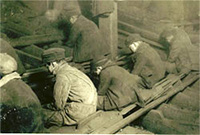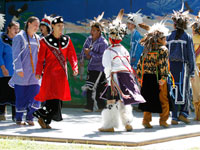1. [The American] will live 50 years instead of 35 as at present—for he will reside in the suburbs. The city house will practically be no more. Building in blocks will be illegal. The trip from suburban home to office will require a few minutes only. A penny will pay the fare.
True. In the 20th century, transportation and sanitation  advances led to the rise of developments around cities. Streetcars, trains, and, later, highways made it possible for workers to commute to urban centers for work and to travel outside of the city for their home life. Suburb development grew exponentially after World War II with the rapid spread of mass-produced housing such as Levittown.
advances led to the rise of developments around cities. Streetcars, trains, and, later, highways made it possible for workers to commute to urban centers for work and to travel outside of the city for their home life. Suburb development grew exponentially after World War II with the rapid spread of mass-produced housing such as Levittown.
2. Fleets of air-ships, hiding themselves with dense, smoky mists, thrown off by themselves as they move, will float over cities, fortifications, camps or fleets. They will surprise foes below by hurling upon them deadly thunderbolts. These aerial war-ships will necessitate bomb-proof forts, protected by great steel plates over their tops as well as at their sides.
True. Several aspects of this prediction came true, including the move to aircraft as a central defensive and offensive weapon. Later in the 20th century, the U.S. government spent significant resources on the research and development of a national missile defense system under the Strategic Defense Initiative Organization (SDIO), established in 1984.
3. Persons and things of all kinds will be brought within focus of cameras connected electrically with screens at opposite ends of circuits, thousands of miles at a span. American audiences in their theatres will view upon huge curtains before them the coronations of kings in Europe or the progress of battles in the Orient although they will not hear the crowds cheer or the guns of a distant battle as they boom.
False. In its actual form, this prediction foresaw the ability to see "live" events across the globe and also predicted the ability to hear events as they happened: "The instrument bringing these distant scenes to the very doors of people will be connected with a giant telephone apparatus transmitting each incidental sound in its appropriate place. Thus the guns of a distant battle will be heard to boom when seen to blaze, and thus the lips of a remote actor or singer will be heard to utter words or music when seen to move".
4. The owner of a [flying] machine, or even the man who did not own one, by patronizing the express lines, could live 50 miles away and yet do business in the city day by day, going by air line to his home each night.
False. Theodore Waters of the New York Herald actually predicted that workers could easily commute 500 miles to work each day, flying home each night, a further visualization of transportation innovation as well as of the relationship between work and home as the notion of suburbs emerged.
5. Coal will not be used for heating or cooking. It will be scarce, but not entirely exhausted. The earth's hard coal will last until the year 2050 or 2100; its soft-coal mines until 2200 or 2300. Meanwhile both kinds of coal will have become more and more expensive. Man will have found electricity manufactured by waterpower to be much cheaper.
True. Well into the 1800s,  Americans met their needs by harvesting energy and materials from plants, animals, rivers, and wind. By the 1830s, though, large-scale coal extraction had begun in Pennsylvania, Virginia, and beyond. By the 1910s, more than 750,000 coal miners dug and blasted upwards of 550 million tons of coal a year. Fossil fuels changed daily life in America, from travel to shopping, daily life to leisure. America's industrial ascendancy, however, caused problems for humans and the environment and in 2009, the threat of diminishing supplies is a serious concern.
Americans met their needs by harvesting energy and materials from plants, animals, rivers, and wind. By the 1830s, though, large-scale coal extraction had begun in Pennsylvania, Virginia, and beyond. By the 1910s, more than 750,000 coal miners dug and blasted upwards of 550 million tons of coal a year. Fossil fuels changed daily life in America, from travel to shopping, daily life to leisure. America's industrial ascendancy, however, caused problems for humans and the environment and in 2009, the threat of diminishing supplies is a serious concern.
6. Ready-cooked meals will be bought from establishments similar to our bakeries of today. They will purchase materials in tremendous wholesale quantities and sell the cooked foods at a price much lower than the cost of individual cooking. Food will be served hot or cold to private houses in pneumatic tubes or automobile wagons. The meal being over, the dishes used will be packed and returned to the cooking establishments where they will be washed.
True. In the early 20th century, new household technology was both accomplished and inspired by the tremendous increase in American industrial production. As in industry, mechanization and scientific management were part of a larger reorganization of work. And as in industry, efficient housekeeping was partially a response to labor unrest—both the "servant problem" and the growing disquiet of middle-class wives. A major proponent of the new housekeeping, Christine Frederick published books, articles, and pamphlets on scientific management in the home with a focus on greater efficiency, from cooking to washing dishes. This plan, in some ways predictive of the late 20th-century shift to pre-cooked meals in stores and restaurants, likely drew on this emerging ideology.
7. The living body will to all medical purposes be transparent. Not only will it be possible for a physician to actually see a living, throbbing heart inside the chest, but he will be able to magnify and photograph any part of it.
True. X-rays were first identified in the late 19th century, but were not widely used for medical research and treatment in 1900 when this prediction was written. Since 2005, X-rays were listed as a carcinogenic by the U.S. government. The author likely would not have envisioned the 21st-century field of endoscopy that allows medical professionals to see and photograph many parts of the body through a small tube.
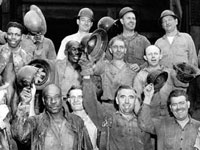
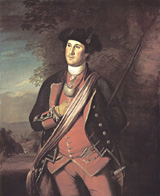
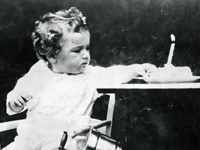
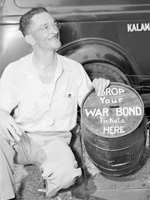
 advances led to the rise of developments around cities. Streetcars, trains, and, later, highways made it possible for workers to commute to urban centers for work and to travel outside of the city for their home life. Suburb development grew exponentially after World War II with the rapid spread of mass-produced housing such as Levittown.
advances led to the rise of developments around cities. Streetcars, trains, and, later, highways made it possible for workers to commute to urban centers for work and to travel outside of the city for their home life. Suburb development grew exponentially after World War II with the rapid spread of mass-produced housing such as Levittown. Americans met their needs by harvesting energy and materials from plants, animals, rivers, and wind. By the 1830s, though, large-scale coal extraction had begun in Pennsylvania, Virginia, and beyond. By the 1910s, more than 750,000 coal miners dug and blasted upwards of 550 million tons of coal a year. Fossil fuels changed daily life in America, from travel to shopping, daily life to leisure. America's industrial ascendancy, however, caused problems for humans and the environment and in 2009, the threat of diminishing supplies is a serious concern.
Americans met their needs by harvesting energy and materials from plants, animals, rivers, and wind. By the 1830s, though, large-scale coal extraction had begun in Pennsylvania, Virginia, and beyond. By the 1910s, more than 750,000 coal miners dug and blasted upwards of 550 million tons of coal a year. Fossil fuels changed daily life in America, from travel to shopping, daily life to leisure. America's industrial ascendancy, however, caused problems for humans and the environment and in 2009, the threat of diminishing supplies is a serious concern.